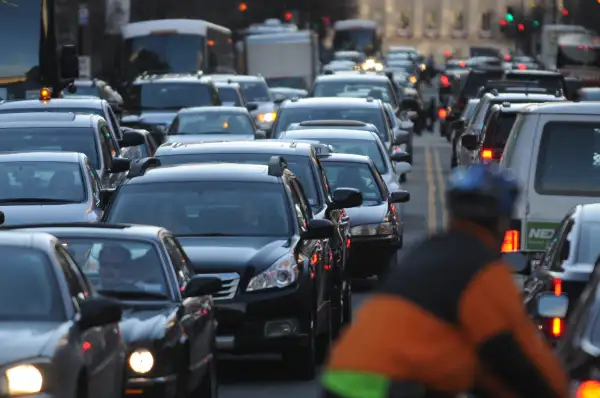Auto Insurance Rates Are 70% Higher If You Live in a Black Neighborhood

Living in a mostly-black neighborhood brings new challenges to consumers—this time to your wallet.
According to new findings from the Consumer Federation of America, good drivers living in a mostly African American zip code end up paying more on their auto insurance premiums than similar drivers living in mostly white neighborhoods do. The higher rates are passed along regardless of driving history, population density, and income.
"On average, predominantly African American communities are quoted premiums that are 70 percent higher than similarly situated drivers in predominantly white communities ($1,060 vs. $622)," the report states.
When you make income a factor, the findings are even worse. In upper-middle income, predominately black ZIP codes, the average car insurance premium is 194% higher than similarly-earning white ZIP codes. That's a difference between $2,113 vs. $717, respectively.
Look a lot like discrimination? That's because it probably is, according to J. Robert Hunter, director of insurance for the CFA. “The pricing disparities for state mandated minimum auto insurance coverage quoted to drivers in primarily African American communities are hard to fathom actuarially and look a lot like unfair discrimination,” Hunter said in a press release.
The results are consistent across the nation's five largest auto insurers. State Farm, Allstate, and Geico all exhibit a disparity of at least 52%; Progressive and Farmer's Insurance are the worst offenders, averaging a 92% disparity between insurance premiums paid by customers living in mostly-black and mostly-white neighborhoods with good driving records.
The study does indicate that more urban neighborhoods, which generally are more likely to house more black residents, may have higher insurance premiums thanks to higher traffic density. But once you account for population density (meaning you account for the difference in rural versus urban neighborhoods), the findings that black neighborhoods pay more still holds true.
The communities most affected by the pricing discrepancy include those within Baltimore, New York City, Louisville, Washington, D.C., and Detroit.
To be sure, insurance companies are implicitly discriminatory—and they're allowed to be. That means, according to researchers in Michigan, Minnesota, and Texas who penned a 2013 study, that insurers are allowed to pool consumers into different groups and charge different prices based on their respective risk levels. The issue is that, despite seemingly ubiquitous anti-discrimination laws, racial discrimination within insurance policies is apparent.
"A surprising number of jurisdictions do not have any laws restricting insurers’ ability to discriminate on the basis of race, national origin, or religion," the study says.
On Thursday, the National Association of Insurance Commissioners is holding a meeting in which the CFA's findings will be presented along with proposed regulatory solutions. While the meeting is a step in the right direction, it'll take a while before the legal system is able to close the apparent loopholes that leave blacks at a greater disadvantage.